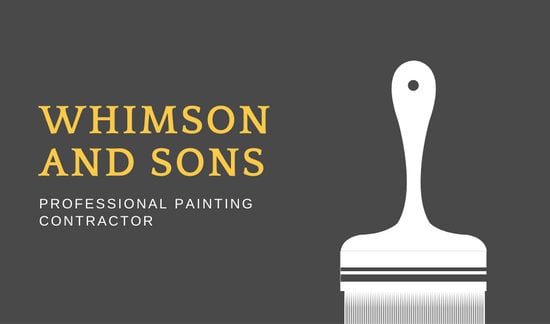Discover The Relationship Between Weather And Commercial Painting Projects, And Find Necessary Methods To Adjust To Unforeseeable Problems For Attaining The Most Effective Results. What Will You Discover Next?
Discover The Relationship Between Weather And Commercial Painting Projects, And Find Necessary Methods To Adjust To Unforeseeable Problems For Attaining The Most Effective Results. What Will You Discover Next?
Blog Article
Written By-Bitsch Wilhelmsen
When you're managing a commercial painting task, you can't overlook exactly how climate plays a crucial role in your success. Variables like temperature, humidity, and wind can either improve or weaken your efforts, influencing everything from application top quality to safety on the job website. You could think you can repaint anytime, however the truth is that certain conditions can cause costly delays or bad finishes. Comprehending these elements is crucial, but what particular techniques can you execute to make sure ideal outcomes in the middle of uncertain climate?
Temperature and Paint Application
When it comes to business painting, temperature level plays a vital function in how well the paint adheres and dries. If you're preparing a task, keep an eye on the temperature level array suggested by the paint producer. Preferably, you wish to function within that variety for optimal outcomes.
When temperatures are also reduced, paint can become thick and harder to use, bring about irregular insurance coverage. Read Even more might find yourself battling with brush strokes or roller marks that just won't vanish.
On the other hand, heats can cause paint to completely dry too swiftly. This can lead to problems like cracking or peeling, as the paint doesn't have enough time to bond effectively to the surface.
If it's too warm, take into consideration scheduling your work for cooler parts of the day, such as early morning or late afternoon.
Moisture and Finish High Quality
Humidity substantially affects the surface quality of commercial paint jobs. When moisture degrees are high, moisture in the air can interfere with the drying process of paint. This can cause concerns like inadequate adhesion, unequal surfaces, and boosted drying out times.
You could discover that your paint takes longer to heal, which can postpone your task timeline.
On the other hand, low humidity can likewise posture problems. If the air is too completely dry, paint can dry as well quickly, protecting against correct progressing and leading to a rough surface. You want your paint to flow efficiently, and rapid drying out can prevent that, leaving you with an unacceptable surface area.
To accomplish the most effective surface, go for humidity degrees between 40% and 70%. This variety allows for ideal drying conditions, guaranteeing that the paint sticks well and levels out effectively.
Consider utilizing dehumidifiers or followers to manage dampness in interior jobs, and try to plan exterior jobs for days when moisture is within the perfect array. By taking https://collinlrxek.csublogs.com/40146070/renew-your-home-with-a-mix-of-fascinating-colors-from-traditional-neutrals-to-strong-statement-options-and-uncover-how-to-remain-in-advance-on-the-planet-of-interior-design of humidity, you can improve the final appearance and durability of your industrial paint job.
Wind and Exterior Conditions
While you mightn't think of wind as a significant variable, it can significantly influence the end result of outdoor commercial paint tasks. High winds can disrupt your application procedure, causing paint to completely dry also quickly. When paint dries out also fast, it can lead to an irregular coating or noticeable brush strokes.
You'll also face obstacles with paint overspray, as wind can carry bits far from the intended surface area, causing wasted materials and prospective damage to surrounding locations.
Moreover, solid gusts can develop safety risks on duty website. Ladders and scaffolding are extra at risk to tipping in gusty problems, placing your staff in danger. It's essential to monitor wind rates prior to beginning a project. If winds exceed secure restrictions, it's ideal to delay your work to make sure a top quality finish and maintain security.
On calmer days, you can take advantage of the ideal problems to attain smooth, professional results. Always check the weather forecast and strategy appropriately.
Conclusion
To conclude, recognizing how weather condition affects industrial painting is critical for attaining the most effective results. By keeping an eye on temperature, moisture, and wind problems, you can schedule your projects during optimum times. This not only makes certain a smooth application but additionally boosts the top quality of your coating. So, keep an eye on the projection and strategy as necessary-- doing so will certainly save you time, cash, and aggravation while providing a professional end result each time you repaint.
